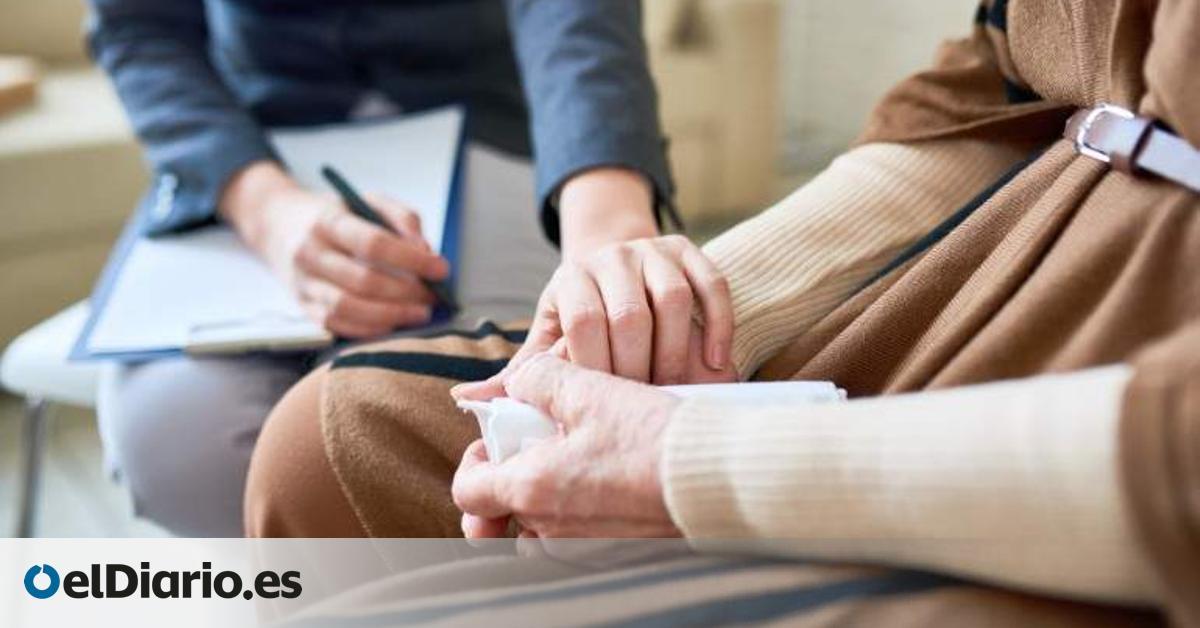
Suicide is the leading cause of unnatural death in Spain and a tragedy that is on the rise. According to data from the National Institute of Statistics (INE), the number of suicides has increased year by year since 2018. The latest available data indicates that 4,003 people took their lives in 2021, 13% more than in 2018, which means around 11 suicides a day. The pandemic has contributed significantly to this trend and preliminary data suggests that in 2022 there were even more cases than in previous years.
A night in the ER that ends in suicide at age 24: when the mental health appointment comes too late
Further
The upward trend in the suicide rate, which reaches 8.4 deaths per 100,000 deaths and is close to the world average of 9 set by the World Health Organization, comes at the peak of the demands of healthcare professionals. Primary Care. Although the causes that lead a person to take their own life are multifactorial, no one denies the work of these health workers in the prevention that is carried out in the first care levels of the system and their key role in addressing the problem.
Primary Care is one of the legs that hold the detection and prevention of suicides for several reasons. On the one hand, it is very common for people who are contemplating taking their own life to come to the clinic for this or other reasons. Already in November 2021, the Spanish Society of Family and Community Medicine pointed out that 40% of individuals who had a suicide attempt had gone to consult their GP the previous week.
“We are the ones that are closest”
On the other hand, certain characteristics of the consultation with the family doctor favor the discovery of potential cases of suicide. In this sense, Antonio Torres, Mental Health coordinator of the Spanish Society of General and Family Physicians (SEMG) explains to elDiario.es that Primary Care stands out for “proximity, accessibility and, above all, the possibility of better knowledge of the patient. The relationship between the two, he explains, “is much closer than between the patient and the doctors in the hospital.” “We are the ones who are closest, the ones with the most immediate access to care,” he argues.
Torres also points out that “soon as you have been in your place, you will learn not only the pathological aspects of your group of people, but also their cultural and work aspects. All this supposes a better knowledge of the person who, at a certain moment, can call your attention more about some behavior that could make us suspect mental illnesses or mental health alterations that could lead to suicidal ideation”.
“How many patients have come in for non-specific pain and have ended up telling us all kinds of personal problems, with a ”I’m sorry, I just can’t help but cry” or ”It’s the first time I’ve told anyone“? We have the capacity and the opportunity to detect, monitor, listen and start prevention, warning of alarm data (as we do with any other pathology) and drawing up an action plan in case of worsening while we coordinate with the also saturated centers of mental health. Of course, specific training in this pathology is essential to be able, first of all, to be suspicious and then to act effectively”, point out Rocío García-Gutiérrez and Ana Peral, spokespersons for SemFYC and experts in suicidal behaviour.
People who have suicidal ideas have a hard time recognizing it and many times they come to the consultation for reasons that have nothing to do with it, such as strange pain, and it is you who has to see if you notice him sad and asking him if he has any problem
“People who have suicidal ideas or autolytic ideation have a hard time recognizing it and, when they come for a consultation, they rarely tell you about it, because it is not normalized or exempt from stigma. Many times they arrive for reasons that have nothing to do with it, such as strange pains, and you are the one who has to see if you notice him sad, asking him if he has any problem…”, explains Peral. But getting to know the patients and identifying those risk factors takes time. Also to explain and facilitate the tools, such as the list of telephone numbers to stick on the fridge (024 and 112), the available resources or where to go in a moment of crisis.
In the current context of public health, time is a luxury in many health centers. In fact, one of the main demands of the doctors and paediatricians on strike in the Community of Madrid is to have 10 minutes on average per patient. “When a patient like that came to my office, he would die because I can’t send him off in six minutes. But it is that in my office I saw the list and they were summoned every two minutes”, explains García-Gutiérrez, who dropped out of Primary school due to the precarious situation because “he could not bear the situation anymore”.
The limited investment in this field of public health by the autonomous communities, well below the 25% of total health spending recommended by the WHO, leads family doctors to a great care overload and a very limited time per patient , which makes it difficult or can prevent the recognition of people who are contemplating suicide by not being able to carry out an in-depth clinical interview. The less time per visit family doctors have, the less likely they are to detect signs or symptoms of depression, anxiety, and suicidal ideation in patients.
“Sometimes a person comes to you with an apparently minor problem and asks for things to sleep better or because of some episode of anxiety caused by a work conflict, we cannot go too deep and, having detected the process that the patient complains about, we do not have time to pay more attention to it. In mental health, personal contact, human closeness, the need to gain the patient’s trust is fundamental, it is necessary, because it is the best way for the patient to open up and to communicate to us some of the aspects that can give us the key to suicide prevention, by detecting suicidal behavior and ideation. Care overload would be another risk factor for suicidal behavior and its lack of detection”, explains Torres.
In the mental health strategy of the National Health System for 2022-2026 there are ten marked strategic lines: the fourth is the prevention and early detection of suicidal behaviour. However, there is no comprehensive plan, coordinated at the national level, to act decisively in the prevention of suicides, despite the fact that more and more associations and health professionals are demanding it. For now, independent programs have been developed to prevent suicides in some autonomous communities.
“The actions both at the level of intervention and prevention are precarious. The World Health Organization (WHO) warns about the lack of initiatives on the part of many Western countries, including Spain, in effective measures to deal with suicide. National resources and policies are urgently needed to investigate, prevent and treat suicidal behavior at different age levels”, comments Laura Alejandra Rico-Uribe, researcher at the Faculty of Health Sciences at the International University of La Rioja for the Science Media Center .
A “key task in mental health care”
Although it is not possible to quantify the impact of the deterioration of Primary School on the increase in suicides, the mental health strategy itself already recognized “the work carried out in mental health” from the health centers. “Although it is not easy to have data at the national level that quantify the specific dedication of its professionals in this task, the work carried out from these devices by family doctors, pediatricians and nurses is key in the mental health care provided in the whole of the SNS”, read the document that considered this first care step a strength of the system.
In this strategy, recommendations and objectives that have to do directly with Primary Care are proposed, such as improving the detection of people at risk of suicidal behavior, promoting training and interview techniques for the detection and management of suicidal risk or adapt professional resources to what is necessary in a context of equity. “It is necessary to make the political decision to invest in human resources, for which economic resources are needed,” says the president of the Spain Mental Health Confederation, Nel González, who considers that “the lack of personnel and immediate and adequate response can be a trigger that makes people remain desperate and think that, if they don’t get care at the nearest resource, what will become of them”.
González insists on that same idea of time and attention. “We have the best professionals we could ask for and they want to do things right but where can they do it if they don’t have time? A mental health problem, even a slight one, needs time for the person to express themselves, feel accompanied, be able to guide them properly and that they do not give them a consultation for two or three months in response to their demand today ”, he develops. Because “when the situation spills over and you don’t know what will happen to you tomorrow and on top of that you go to the family doctor and he has no resources to treat you, it is possible that the situation worsens.”
Source: www.eldiario.es

